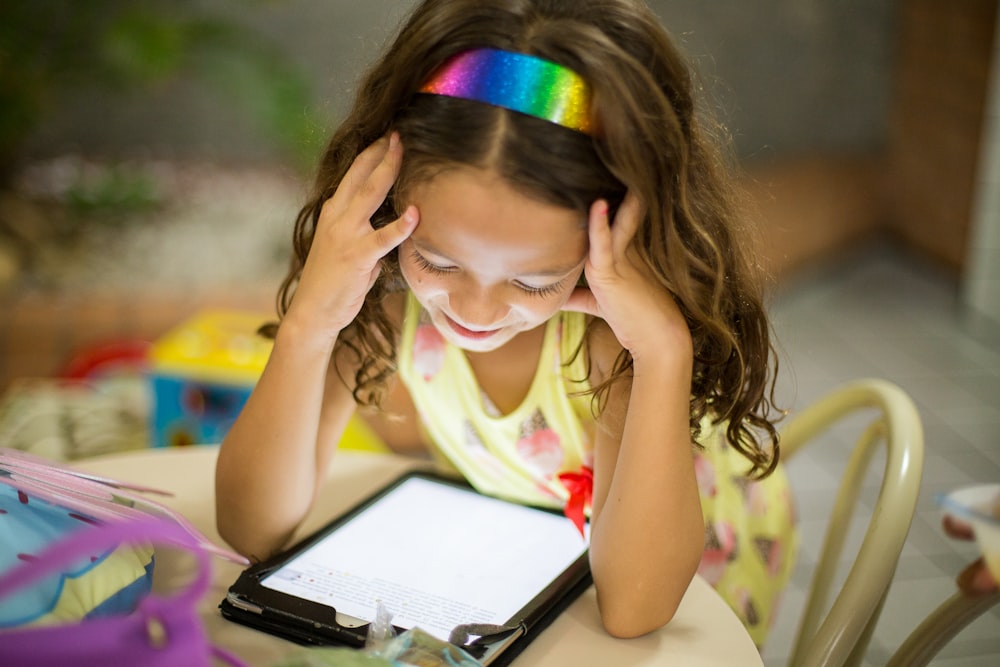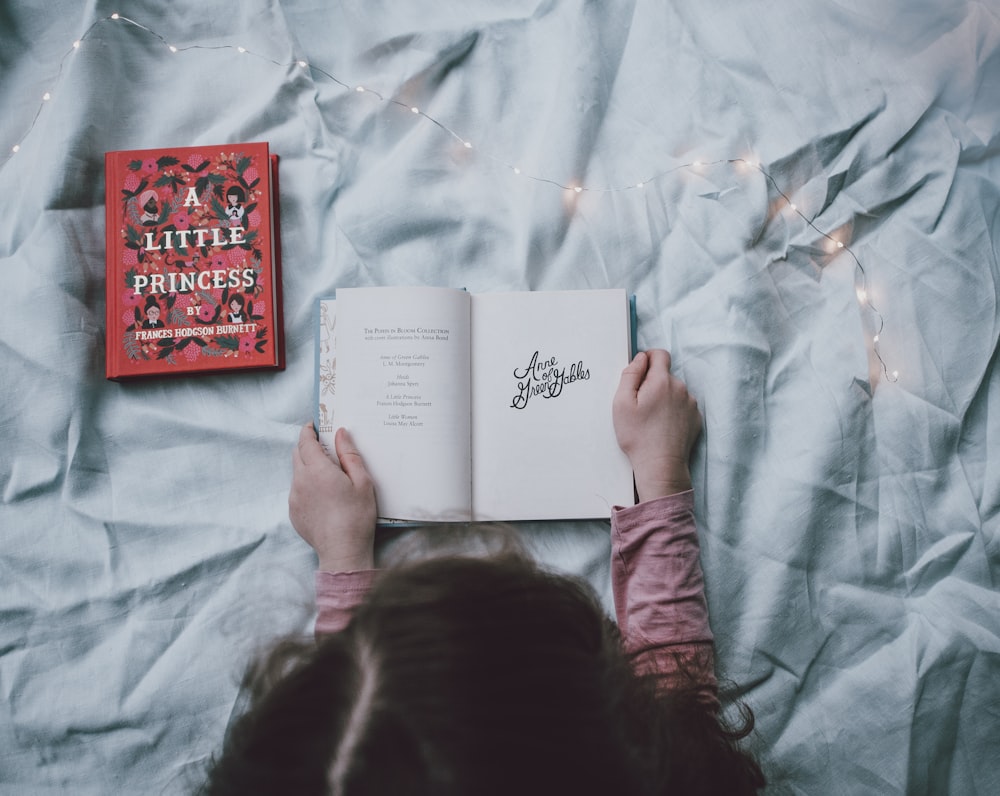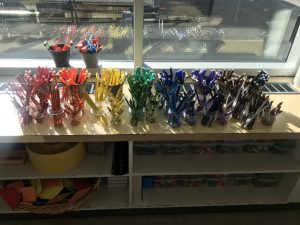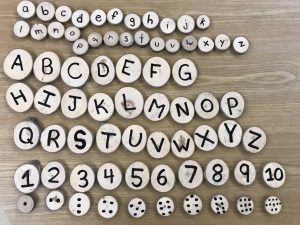Teaching and learning in the 21st century poses an entirely new challenge for both educators and students. The acquired skills necessary to be considered literate citizens have evolved to comprise technological competencies (BC Ministry of Education, 2016). Children are expected to develop into innovative thinkers, digital communicators, and content creators (NTCE, 2013). However, when working with young children much of the onus is put on the shoulders of the educator to guide learners in their technological pursuits. The contexts in which educators work play a large role in the implementation and utilization of technology. One of the most prominent contemporary contexts are Reggio Emilia inspired early learning programs. The Reggio Emilia approach was developed by Loris Malaguzzi, an Italian educator who founded an early childhood education center in his town of Reggio Emilia after it had been destroyed during World War II (Galloway, 2015). Malaguzzi used his influence as an educator to rebuild the sense of community of Reggio Emilia. Malaguzzi’s pedagogical practices were grounded in his philosophies around the image of the child, the environment as the third teacher, the significance of documentation, and the role of the community.
The Reggio Emilia approach honours children as competent and capable navigators of their own learning. It is the responsibility of children’s caregivers and educators to provide them with rich learning environments which offer inspiration and invitations to learn. Malaguzzi valued loose parts, natural materials, warm lighting, and soft materials to offer children a welcoming, home-like learning environment (Bers, Strawhacker & Vizner, 2018; Galloway, 2015). Within the Reggio Emilia approach, the learning process is valued over the finished product. Documentation and displays offer a means of making learning visible, enabling reflection for learners and educators while also connecting with the greater community. Cultural and community contexts are great influencers of the Reggio Emilia approach which strives to authentically reflect the inhabitants of the learning community; therefore, the Reggio Emilia approach cannot be replicated, it can only inspire (Alper, 2013; Bers, Strawhacker & Vizner, 2018; Galloway, 2015; Mitchell, 2007). There appears to be a dissonance between the naturalistic, child-centered, culturally driven ideologies of the Reggio Emilo approach and the digitally saturated, technology based education practices of the 21st century. The following literature review is intended to investigate how to effectively and authentically integrate technology into Reggio Emilia inspired early learning environments.
Theoretical Framework
Social Constructivism (Vygotsky, 1978)
The Reggio Emilia approach is deeply rooted in Vygotsky’s social-constructivism (1978). Children work in a community, accessing and building upon each other’s prior knowledge and experiences. Children are regarded as agentic beings who are in charge of their own learning. Within social constructivism, children learn through social interactions and are guided by the knowledge of experienced peers and educators.
Experiential Learning (Kolb, 1984)
Highlighted within the Reggio Emilia approach is the emphasis on the process of learning. Kolb’s experiential learning theory (1984) recognizes the cyclical nature of this process during which time children learn through failures, successes, reflection, and repetition. Experiential learning is holistic, valuing children’s experiences, perspectives, cognitive processes, and behaviours. Knowledge is constructed through overcoming the challenges and obstacles of the learning process. Learning is never complete, offering children the opportunity to continuously refine and develop their understandings of the world.
Literature Review
The Image of the Child
When integrating technology within Reggio Emilia inspired programming it is important to consider the purpose of the technology. As per the SAMR (substitution, augmentation, modification, redefinition) Model for new media literacies, Hamilton, Rosenberg and Akcaoglu (2016) warn against using technology as a means to simply replace or enhance a task that could be completed without technology. Instead, technology should be implemented when it can be used to significantly and positively alter a task or to create an entirely new task (Hamilton et al., 2016). “What makes NMLs ‘new’ is that they seek to bridge the gap between the sometimes-isolated conceptualizations of digital learning and social learning, focusing on the critical thinking and reflection skills necessary to participate actively in an increasingly complex digital media environment” (Alper, 2013, p.178). This distinction is pertinent in the Reggio Emilia context in which new knowledge is considered to be socially constructed. A study conducted by Hong and Trepanier-Street (2004) found that providing computer software such as KidPix or Kidspiration within a Reggio Emilia inspired early learning center, offered young learners a superior platform for communication and collaboration. Malaguzzi (1996) posited that children have a hundred languages, meaning that their communication is multifaceted–technology is considered to be one of those many facets (Alper, 2013; Galloway, 2015). Technology enables young learners to explore and communicate their thinking at much more complex levels than what we are accustomed to when they use conventional tools (Alper, 2013; Hong & Trepanier-Street, 2004). The support provided by technology confirms the Reggio Emilia view of the child as being capable and competent learners.
The Environment as the Third Teacher
The Reggio Emilia approach identifies three primary teachers for the young learner: 1) caregivers, 2) educators, and 3) the environment. It is the responsibility of educators and caregivers to provide children with open-ended, inviting materials to ignite their curiousity and inquiry. Unlike traditional early childhood education programs, Reggio Emilia inspired learning environments house both digital and non-digital materials together to invite a fluidity between interacting with the provided tools during play (Alper, 2013; Bers, Strawhacker & Vizner, 2018). “Experimentation and media manipulation, within a full ecology of digital and non-digital languages, are key qualities of play for both NMLs and Reggio” (Alper, 2013, p.185). The uninstructructive manner in which digital and non-digital tools are displayed offer children the freedom to take their learning, quite literally, into their own hands. Examples of the rich materials and tools which may be provided include but are not limited to robotic kits, circuitry materials, vinyl cutters, powered hand tools, robotics kits, cardboard, clay, scissors, tape, and metal brads. Practices of the Reggio Emilia approach, including offering a variety of materials, empowering students to think creatively, and regarding children as competent, agents of knowledge construction, have been likened to those of the Maker Movement (Galloway, 2015). “The maker movement pays special attention to the social practices, technology use, and peer-mentorship that characterizes a collaborative project-based learning environment” (Bers et al., 2018, p.76). The thoughtful design of Reggio Emilia inspired early learning environments complete with engaging technologies, tools, and materials provide children the opportunity to develop their identities both as individuals and community members (Bers et al., 2018; Galloway, 2015). It is important to address the amount of adult involvement required for children to operate technologies such as 3D printers and laser cutters. Bers et al. (2018) suggested offering technological tools such as Scratch Jr. (a coding application) and vinyl cutters which can keep children engaged with limited adult involvement. Technology within Reggio Emilia inspired programming is intended to empower young learners to be content creators, not just consumers.
Making the Learning Visible
Documentation and pedagogical narration play an integral role in Reggio Emilia inspired early learning environments. Digital photos, videos, voice recordings, and anecdotal notes make children’s learning visible in ways that traditional methods of recording fail to do so (Lim & Cho, 2019; Mitchell, 2007). Documentation also supports children and educators in engaging in continuous reflection which ultimately enables them to build upon prior knowledge and problem-solve through the ongoing trials and tribulations of the learning process (Hong & Trepanier-Street, 2004; Lim & Cho, 2019). Documentation can lead to an emergent curriculum, offering educators the opportunity to reflect on their teaching practices and the learning pathways of their students. According to Lim and Cho (2019) children are more motivated to learn when they know their work is being documented. “Documentation externalizes memory and processes, creating artefacts that expand children’s and adult’s cognitive capacities” (Alper, 2013). Not only does digital documentation serve to make learning visible, it also preserves artifacts in an easily stored, yet easily accessible fashion.
Connecting with the Community
The Reggio Emilia approach values the learning community both inside and outside of the early learning environment. Mitchell (2007) proposed that one of the most beneficial reasons to use technology as a form of communication is its ability to share globally. However, through their study examining communicating home via mobile apps in a Reggio Emilia inspired early learning center, Lim and Cho (2019) found that the greater benefit lies in digital documentation to open up dialogue between families and children. Teachers were better able to connect with families and share the learning that occurs throughout the school day, enabling parents to actively engage in the learning process. Similarly, Hong and Trepanier-Street (2004) noted that when teachers created documentation panels, daily learning webs, and concept maps for display in the early learning center, parents were better able to connect with their children’s learning which fostered a sense of pride in young learners. The difference is that through mobile apps, parents who are unable to visit the learning center due to time constraints have the option of connecting with their children’s learning remotely. The accessibility of mobile communication is much more inclusive of contemporary families’ schedules. Bers, Strawhacker, and Vizner (2018) recognized that developing community and civic connectedness is one of the largest proponents of the Reggio Emilia approach. As opposed to adopting the traditional role of “sage on the stage,” educators position themselves as co-researchers with their young learners. Work is documented and displayed with pictures, quotes, and labels. “This “museum style” approach to room cultivates a sense of community, as well as a respect for creative, original work. These values are at the heart of the Reggio Emilia philosophy” (Bers et al., 2018, p. 91). Through mobile communication, educators can bridge the gap between home and school while also connecting with the larger community.
Summary
Based on the findings of the literature, technology integration within early learning centers has been proven to be congruent with the ideologies of the Reggio Emilia approach. The image of the child is honoured by technology’s ability to empower children to represent their thinking and create content beyond their capabilities with conventional tools. When including technology within the learning environment both digital and non-digital tools can be displayed in aesthetically pleasing, inviting provocations to engage young learners in exploration and organic learning experiences. Digital technology such as videos, photos, and voice recordings enhance the documentation process by capturing moments and creating artifacts that can be reflected on by both learners and educators. Lastly, technology creates a sense of community in the early learning environment, enabling students and educators to co-construct knowledge together while also connecting with the greater community. To combat the feeling of disconnect between Reggio Emilia approach and technology integration, educators must reflect on the digital tools that they are introducing to the learning environment, the manner in which the tools are presented, and the purpose of the tools. No matter the technology, the voice of the child must always be at the forefront of Reggio Emilia inspired early learning environment.
References
Alper, M. (2013). Developmentally appropriate new media literacies: Supporting cultural competencies and social skills in early childhood education. Journal of Early Childhood Literacy, 13(2), 175-196. doi:10.1177/1468798411430101
BC Ministry of Education. (2016). Digital Literacy Framework. Retrieved from http://www.bced.gov.bc.ca/dist_learning/dig_lit_standards.htm
Bers, M., Strawhacker, A., & Vizner, M. (2018). The design of early childhood makerspaces to support positive technological development two case studies. Library Hi Tech, 36(1), 75-96. doi:10.1108/LHT-06-2017-0112
Hamilton, E. R., Rosenberg, J. M., & Akcaoglu, M. (2016). The substitution augmentation modification redefinition (SAMR) model: A critical review and suggestions for its use. Techtrends, 60(5), 433-441. doi:10.1007/s11528-016-0091-y
Hong, S. B., & Trepanier-Street, M. (2004). Technology: A tool for knowledge construction in a reggio emilia inspired teacher education program. Early Childhood Education Journal, 32(2), 87-94. doi:10.1007/s10643-004-7971-z
Kolb, D. A. (1984). Experiential Learning: Experience as the Source of Learning and Development. New Jersey, NJ: Prentice-Hall.
Lim, S., & Cho, M. (2019). Parents’ use of mobile documentation in a reggio emilia-inspired school. Early Childhood Education Journal, 47(4), 367-379. doi:10.1007/s10643-019-00945-5
Mitchell, L. M. (2007). Using technology in reggio emilia-inspired programs. Theory into Practice, 46(1), 32-39. doi:10.1207/s15430421tip4601_5
NTCE. (2013). The NCTE Definition of 21st Century Literacies. Retrieved from http://www2.ncte.org/statement/21stcentdefinition/
Vygotsky, L. (1978). Mind in Society: The Development of HigherPsychological Processes. Cambridge, MA: Harvard University Press.




 I very much strive to align my teaching practices with the Reggio Emilia philosophy and I believe this is evident in the ways in which the learning environment has been set up. I always associate the Reggio Emilia philosophy with loose parts and natural materials so I was surprised to come across the work of Galloway (2015), which examined the Reggio Emilia approach in relation to technology and the Maker Movement. As indicated by Galloway (2015) both approaches fit very nicely with the
I very much strive to align my teaching practices with the Reggio Emilia philosophy and I believe this is evident in the ways in which the learning environment has been set up. I always associate the Reggio Emilia philosophy with loose parts and natural materials so I was surprised to come across the work of Galloway (2015), which examined the Reggio Emilia approach in relation to technology and the Maker Movement. As indicated by Galloway (2015) both approaches fit very nicely with the  most prominent ways in which technology was present in both the Reggio Emilia approach and the Maker Movement was through documentation. Both approaches offer great emphasis on making thinking and learning visible. In Kindergarten, learning typically emerges through play which provides a challenge to teachers who are looking for evidence of learning for assessment and reporting. Ideally, I would want regular access to a class set of iPads which my students could use to take pictures, videos, and/or voice recordings of their work to document their own learning. A few years ago in
most prominent ways in which technology was present in both the Reggio Emilia approach and the Maker Movement was through documentation. Both approaches offer great emphasis on making thinking and learning visible. In Kindergarten, learning typically emerges through play which provides a challenge to teachers who are looking for evidence of learning for assessment and reporting. Ideally, I would want regular access to a class set of iPads which my students could use to take pictures, videos, and/or voice recordings of their work to document their own learning. A few years ago in